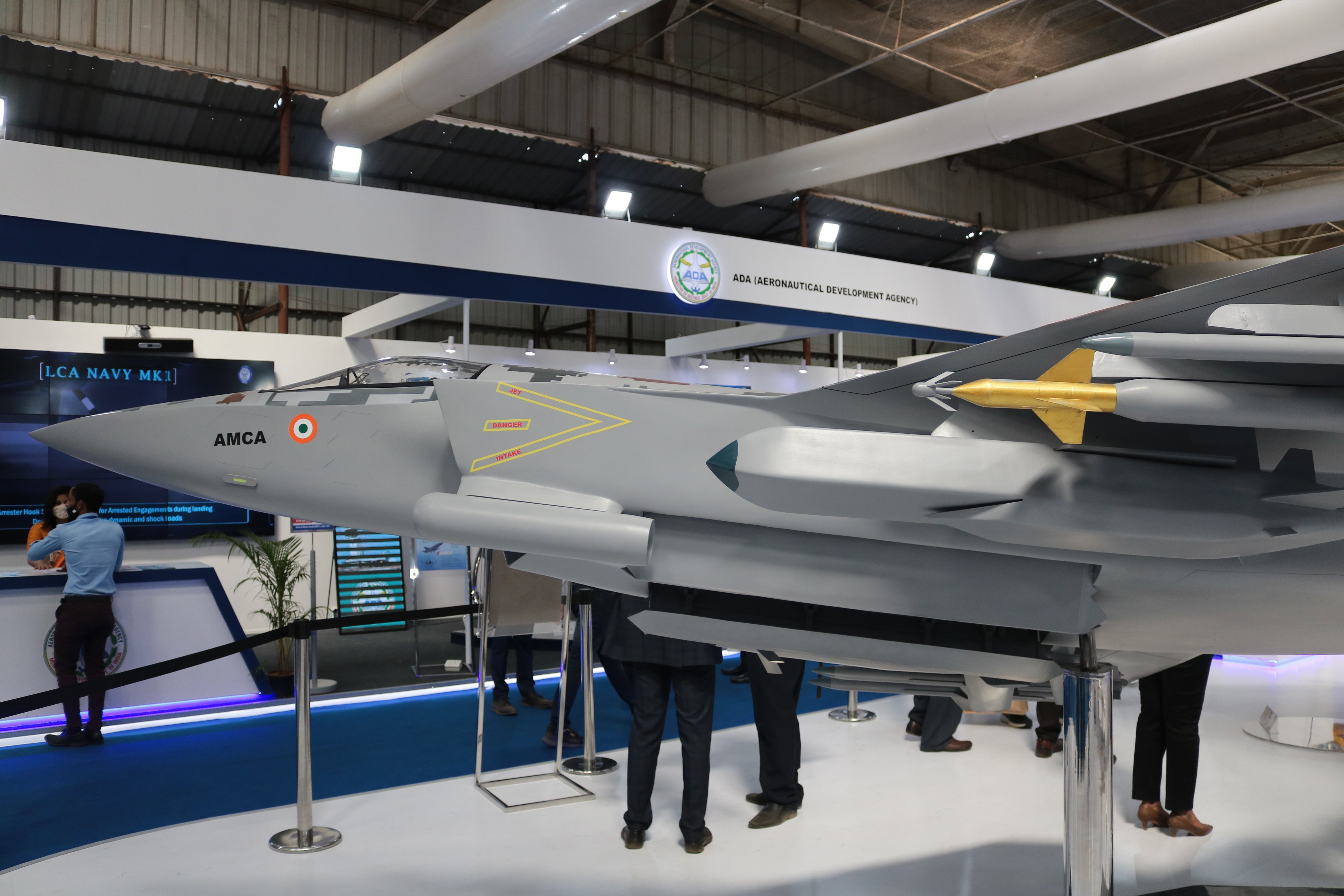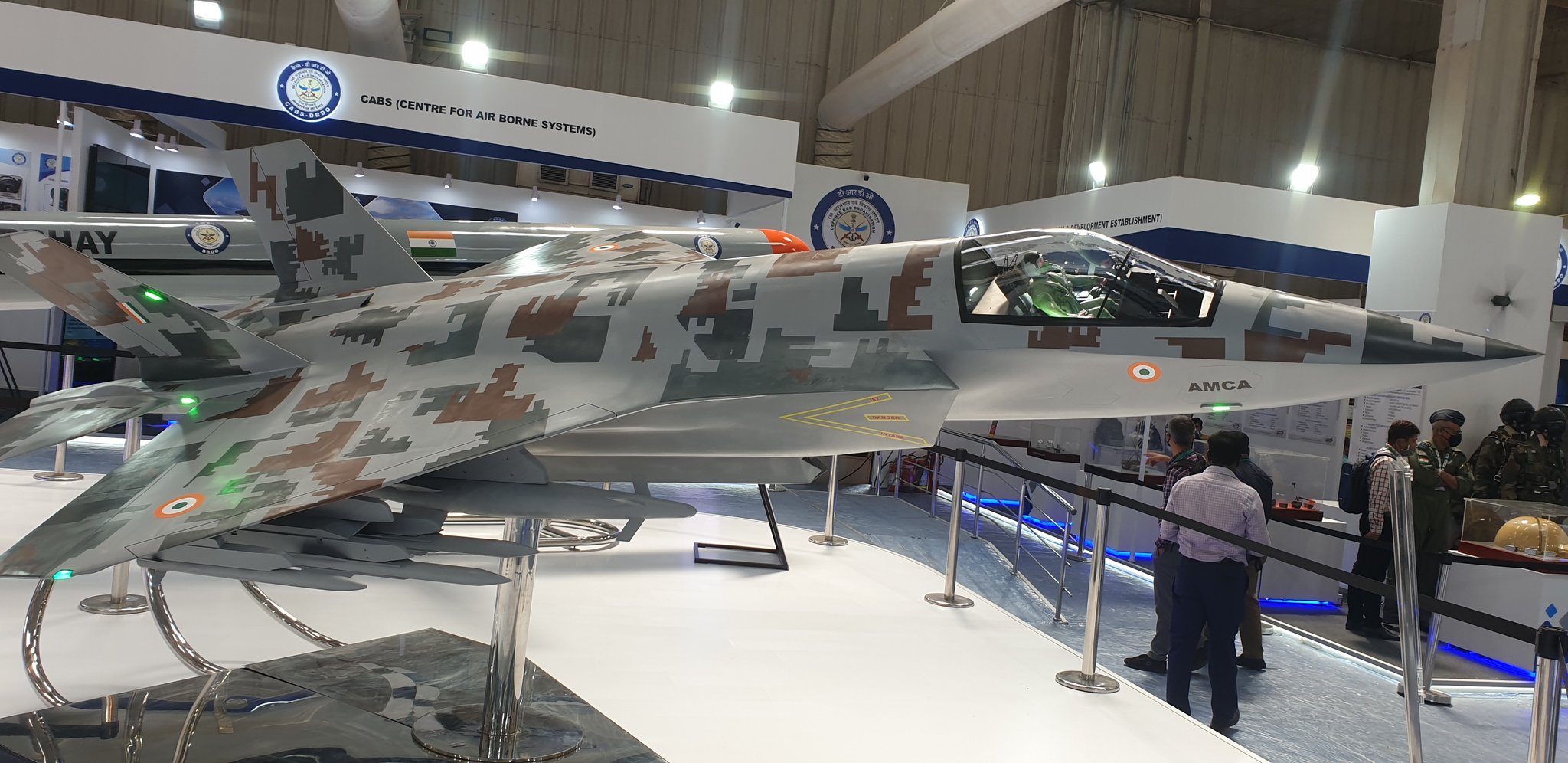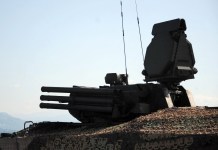In what could be a big boost to India’s fifth-gen AMCA fighter program, the proposal for full-scale engineering development of its prototypes has been finalized. This will be sent to the Cabinet Committee on Security (CCS) for approval early next year, according to The Times of India.
The Advanced Medium Combat Aircraft (AMCA) would feature enhanced stealth qualities and ‘supercruise’ capabilities.
Reports suggest that discussions between the Ministry of Defense and the Ministry of Finance on the development of AMCA prototypes were over. The CCS, the highest decision-making body on India’s national security, is expected to put its stamp of approval early next year.
AMCA would ensure India’s entry into the elite club of countries with fifth-generation stealth warplanes. So far, only the US (F-35 and F-22 Raptor), Russia (Su-57 Felon), and China (J-20) have fifth-generation aircraft in their arsenal. Many experts believe that India could become the fourth country to operate an indigenous stealth fighter aircraft.

The cost of developing the 25-ton AMCA is expected to be roughly Rs 15,000 crore, with Mark-1 jet production starting in 2030-31.
The AMCA project is critical for the IAF, which now operates only 30-32 fighter squadrons. Despite the 36 4.5 generation French-made Rafale fighters, the service will not be able to reach the sanctioned strength of 42 squadrons in the next 10-15 years.
However, one major hurdle in the AMCA program is the engine. The AMCA design that was approved in December 2018 meets the IAF’s “preliminary staff qualitative requirements”. However, the lack of a powerful engine could be a major issue.
As a result, the first two AMCA Mark-1 squadrons will be equipped with the existing General Electric-414 afterburning turbofan engine with a thrust rating of 98 kilonewtons, while the next five squadrons of mark-2 will be equipped with a more powerful 110-kilonewton engine.
The foreign collaborator will be chosen by early-2022, and the new engine will be built in-house at the same time, as reported by TOI. The swing-role AMCA will have advanced stealth features such as “serpentine air-intake” and an internal bay for smart weapons, as well as radar dampening materials and a conformal antenna.
The fighter will also have data fusion and multi-sensor integration with AESA (active electronically scanned array) radars, as well as the supercruise capability, to achieve supersonic cruise speeds without the use of afterburners.
India now finally getting set to launch its most ambitious indigenous military aviation project to build a fifth-generation fighter or the advanced medium combat aircraft #AMCA with advanced stealth features as well as `supercruise’ capabilities. https://t.co/n8Os9vX7Jp
— Rajat Pandit (@rajatpTOI) November 22, 2021
Earlier this year, India’s Ministry of Defence (MoD) awarded a whopping Rs 48,000-crore contract to HAL for 83 LCA Mk-1A fighters for the Indian Air Force. The IAF’s first Mk-1A aircraft is expected to be delivered in March 2024, while the rest will be inducted into service by 2029.
Then there’s the long-awaited “Make in India ” project for 114 new 4.5-generation fighters with “some fifth-generation capabilities” worth over Rs 1.25 lakh crore, which involves seven international contenders and is expected to receive initial “acceptance of necessity” next year.
The AMCA Program
The AMCA is a project of India to build a fifth-generation fighter plane for the Indian Air Force and Navy. Aeronautical Development Agency (ADA), an aircraft design and development agency under Defence Research and Development Organisation, is in charge of the aircraft design.
A public-private partnership between the DRDO, Hindustan Aeronautics Limited (HAL), and an Indian private business is slated to produce it. By 2028, the programme hopes to be in full production.

The AMCA, which is designed to perform a variety of missions such as air superiority, ground-strike, SEAD (Suppression of Enemy Air Defenses), and electronic warfare (EW), would replace the Sukhoi Su-30MKI air superiority fighter, which currently serves as the backbone of the IAF fighter fleet. Low radar cross-section and supercruise capability are key features of the AMCA design.
The feasibility study for AMCA has been completed, as has the preliminary design stage, and the project has now entered the detailed design phase, which began in February 2019. At Aero India 2019, a CAD model of the plane was displayed. By 2025, the maiden flight is expected, and serial production might start by 2030.
After the HAL Marut and HAL Tejas, the AMCA would be India’s third supersonic jet. AMCA will be built in two stages — AMCA Mk-1 and AMCA Mk-2. The former will be a fifth-generation fighter, while the AMCA Mk-2 will be more sophisticated, incorporating certain sixth-generation features.
- Contact the author at ashishmichel@gmail.com
- Follow EurAsian Times on Google News




